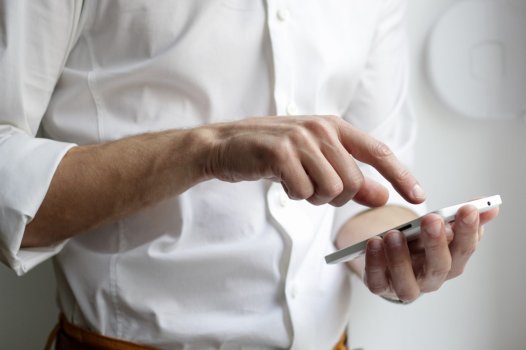K
Kathleen Martin
Guest
The prevalence of smartphones and apps like Apple Wallet, which stores digital versions of credit cards, boarding passes, and event tickets, make our phones an essential part of everyday life. Now that Apple has opened the Wallet app to developers, experts expect to see an increase in mobile credentials used for everything from unlocking cars to storing driver’s licenses, to accessing the office. In this article, we’ll take a closer look at how mobile credentials impact cyber and physical security in the workplace.
With a traditional key card system, people need to have a physical card or fob credential to access the property. While this technology is simple to use, it’s no longer a modern offering for tech-savvy employers, and it lacks the security needed for today’s evolving threats. Key cards are vulnerable to copying and are easily lost, stolen, and borrowed. While some key card systems do offer good security through data encryption and real-time logs, they still require management and monitoring in order to ensure the people scanning the credential are who they say they are.
A mobile credential offers a few key benefits for cyber and physical security in commercial buildings.
With a traditional key card system, people need to have a physical card or fob credential to access the property. While this technology is simple to use, it’s no longer a modern offering for tech-savvy employers, and it lacks the security needed for today’s evolving threats. Key cards are vulnerable to copying and are easily lost, stolen, and borrowed. While some key card systems do offer good security through data encryption and real-time logs, they still require management and monitoring in order to ensure the people scanning the credential are who they say they are.
A mobile credential offers a few key benefits for cyber and physical security in commercial buildings.
- Lower costs
[/LIST=1]
Because the credentials use the phone already in your pocket, there’s no need to purchase and store any additional key cards or fobs. People are also much less likely to lose their smartphones, so you don’t need to replace credentials. While mobile-enabled door readers are more expensive up-front, there are cost savings over time thanks to less wear-and-tear on the hardware, and many cloud-based systems offer subscriptions to avoid expensive licensing fees and on-premise maintenance.- Improved security
[/LIST=1]
A mobile-based access control system leverages 2FA and biometrics already built into the smartphone, plus features like facial recognition to tie a credential directly to a specific individual. Key card entry systems still lack this ability, as anyone can pick up a card and swipe it, plus it’s much harder to replicate or steal a mobile credential to gain access. Data and communication between mobile devices and readers can be fully encrypted, keeping personal identifying information secure.
In addition, mobile credentials have the benefit of instant access. New hires or visitors can get access within seconds, and terminated employees’ access is revoked instantly. However, because smartphones can easily connect to other devices over wifi, Bluetooth, and cell signals, they can be vulnerable to interception. It’s important to educate mobile credential users on cybersecurity best practices to ensure optimal safety.- Convenient and contactless
[/LIST=1]
It’s no secret that people really don’t like key cards and ID badges. Having yet another thing to remember every time you leave the house is a hassle. With mobile credentials, everything is easily in one place. However, some mobile-based access systems still require users to open an app on their phone to unlock the door. For a truly convenient and touchless entry experience, some access control apps use proximity to determine when a user is nearby a door, and motion detection to authorize an unlock without having to have your phone in hand.
Another great thing about using a mobile device as your key? One credential for every door, parking gate, and elevator. Instead of a different key card for every building, a mobile credential can store all that information in a single place. Plus, mobile entry is now available for all entry types and door locks, including turnstiles, elevators, parking lot and garage gates, plus wired and wireless door locks.
Continue reading: https://iottechnews.com/news/2021/oct/04/why-your-phone-is-the-key-to-better-building-security/
- Convenient and contactless
- Improved security

